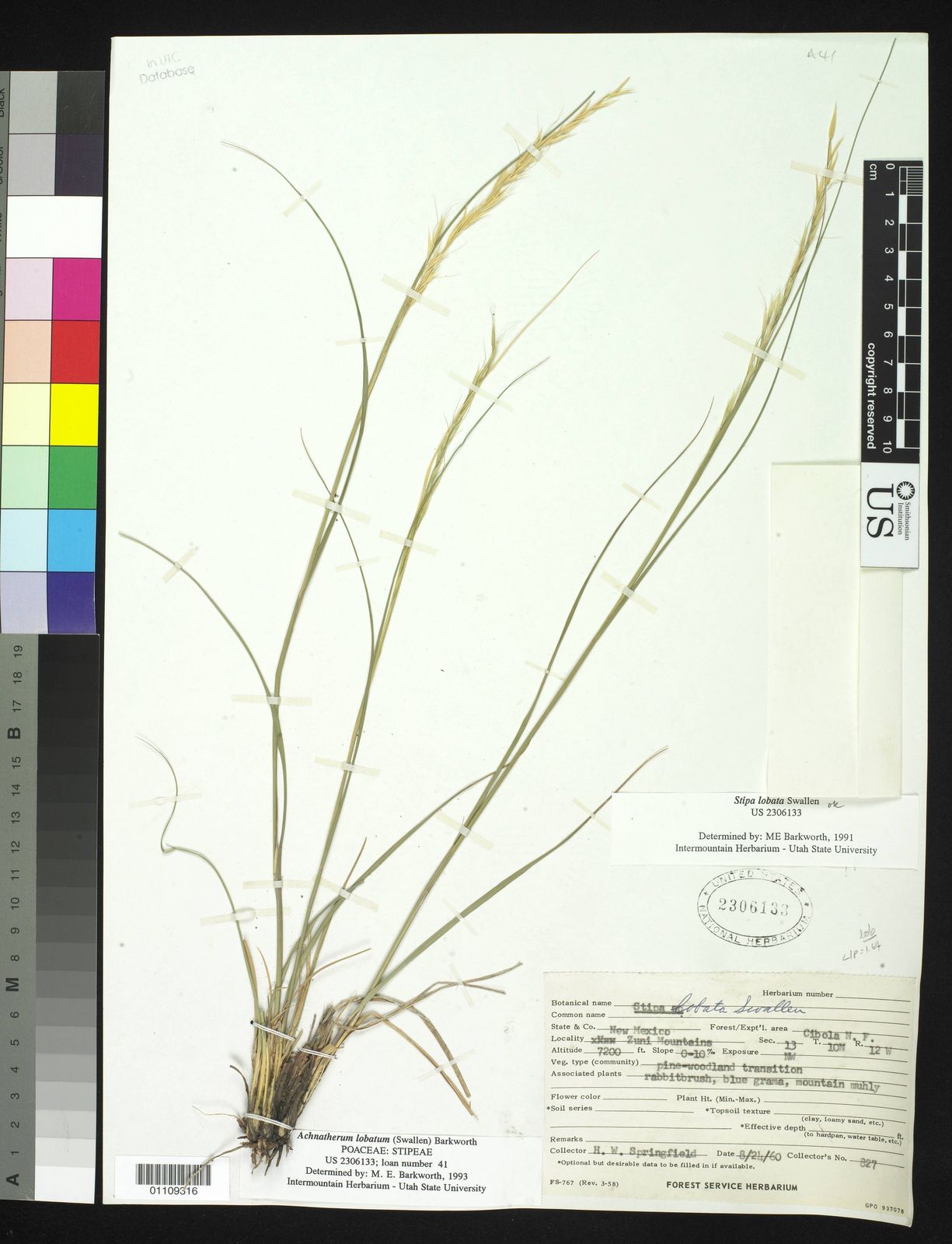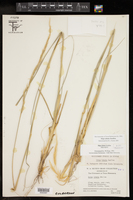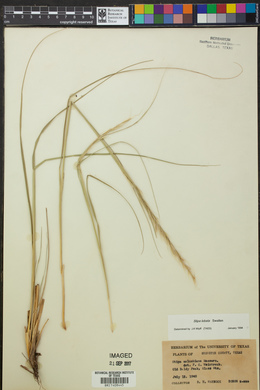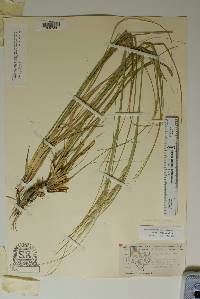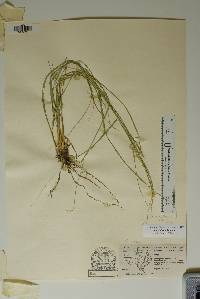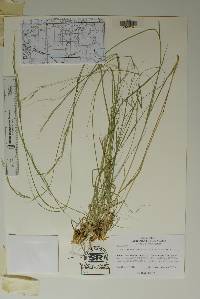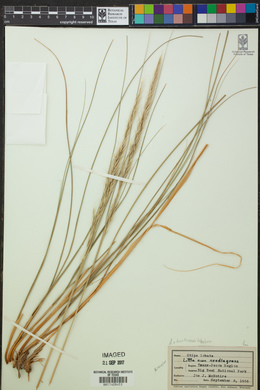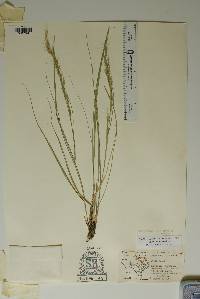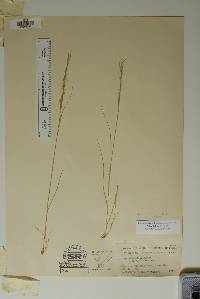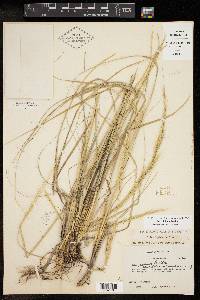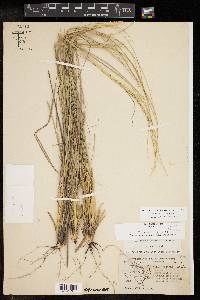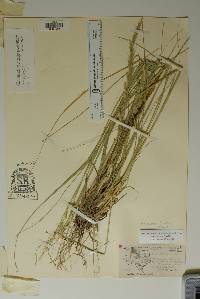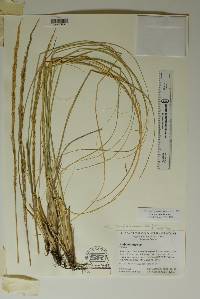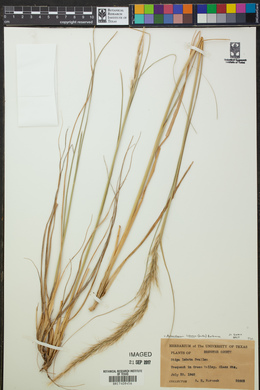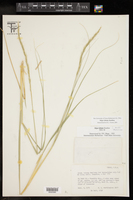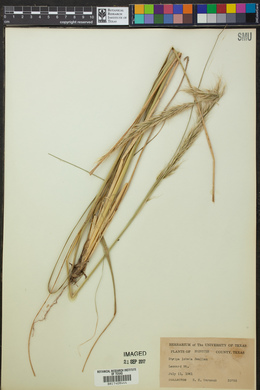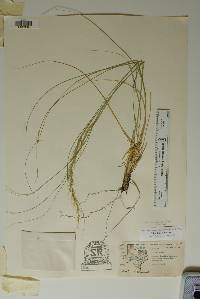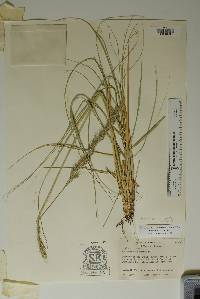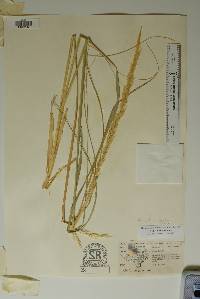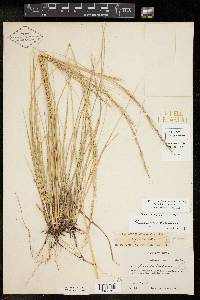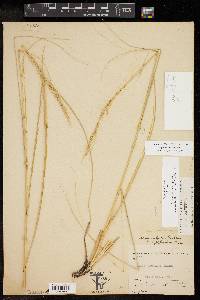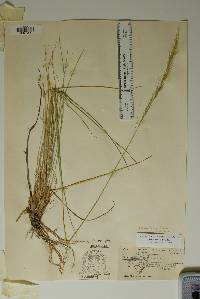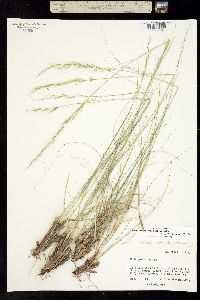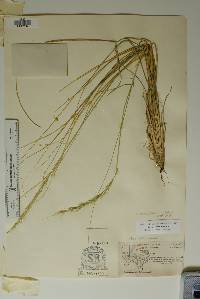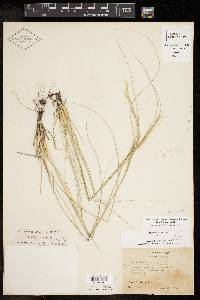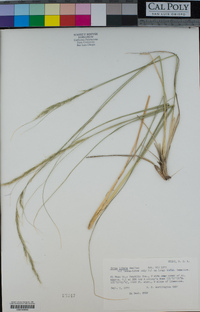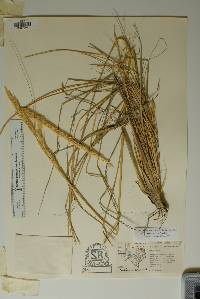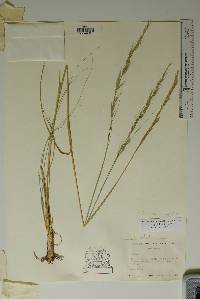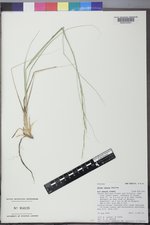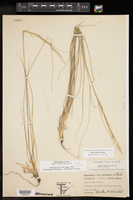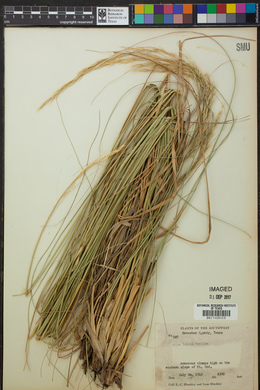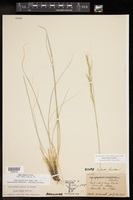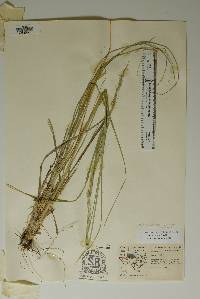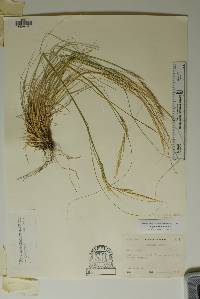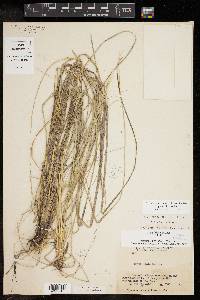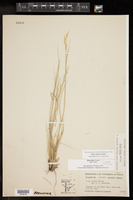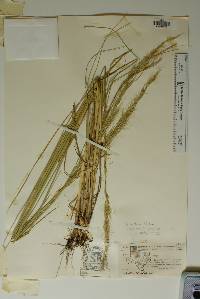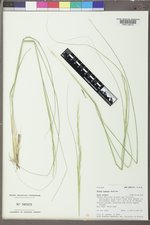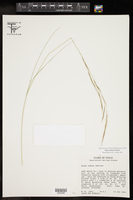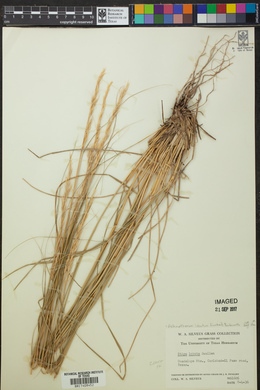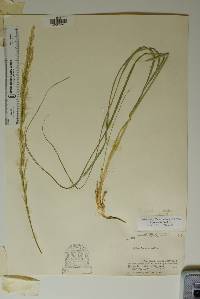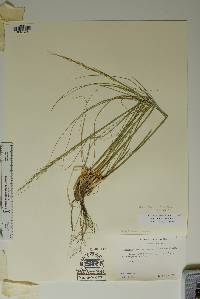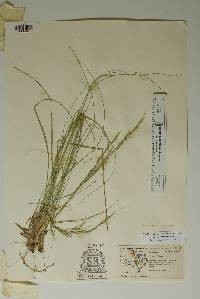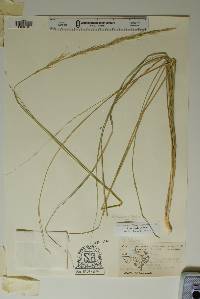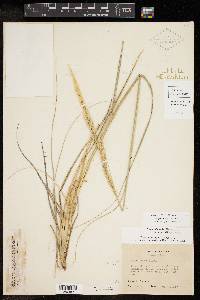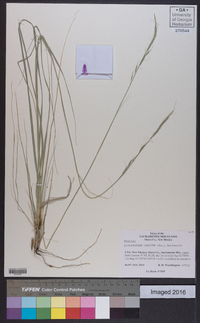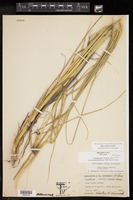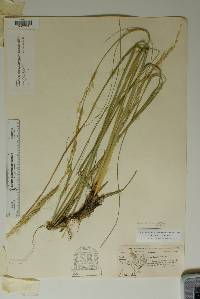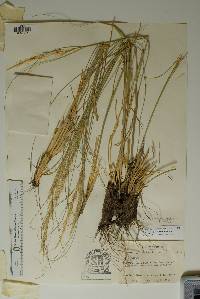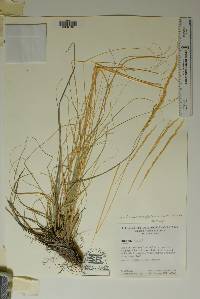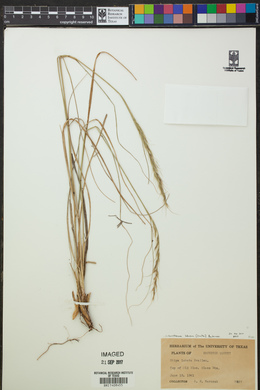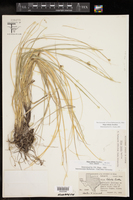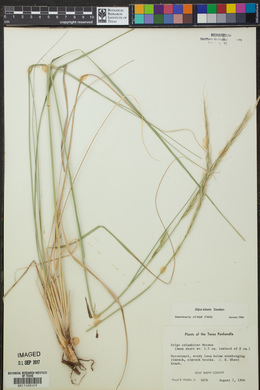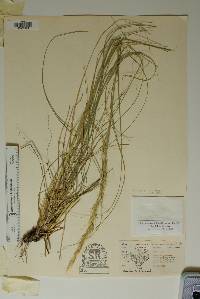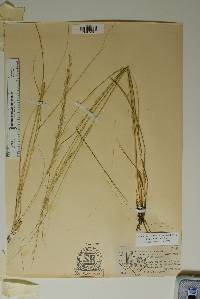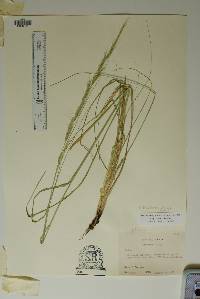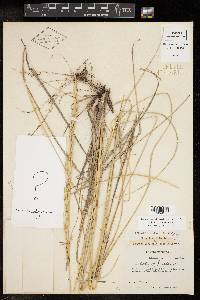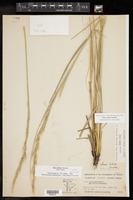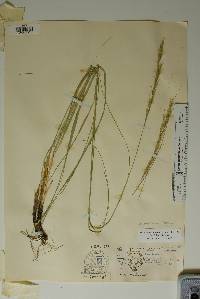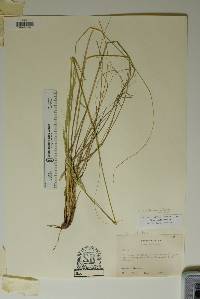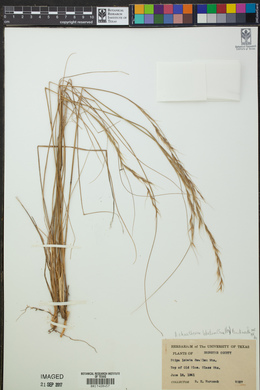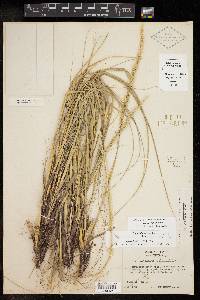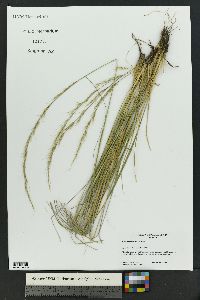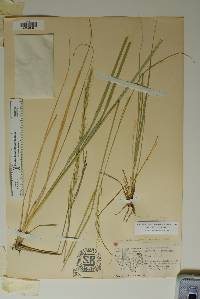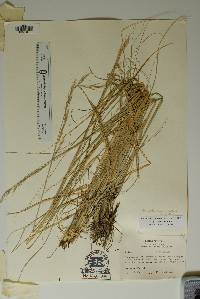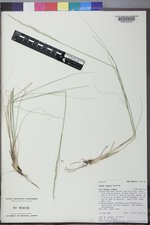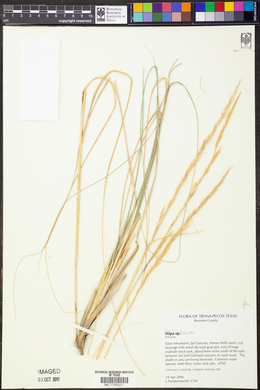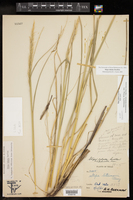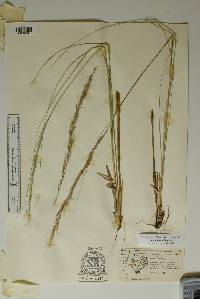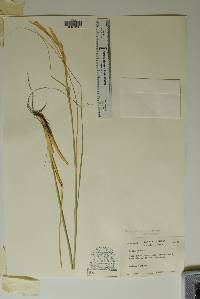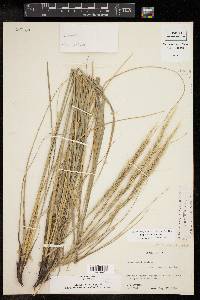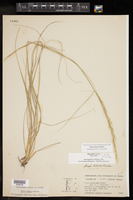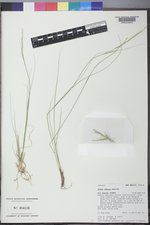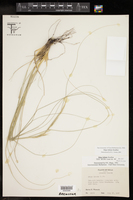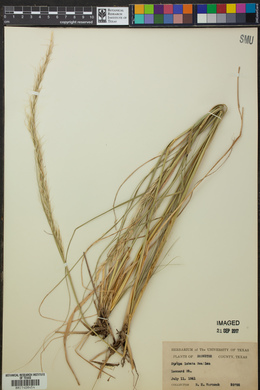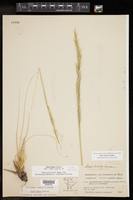
|
|
|
|
Family: Poaceae
Little-Awn Rice Grass, more...littleawn needlegrass, little awn needlegrass, Lobed Needlegrass
[Stipa lobata Swallen] |
Plants cespitose, not rhizom-atous. Culms 40-100 cm tall, 0.6-2.6 mm thick, glabrous or sparsely pubescent to 5 mm below the lower nodes; nodes 4. Basal sheaths becoming flat and papery in age, margins some-times ciliate distally, cilia to 0.5 mm; collars, including the sides, glabrous or sparsely pubescent, collars of the flag leaves glabrous; basal ligules 0.2-1.3 mm, membranous, truncate, erose to ciliate, cilia about 0.05 mm; upper ligules 0.3-1 mm; blades 1-4 mm wide, abaxial surfaces smooth, adaxial surfaces scabrous. Panicles 12-28 cm long, 0.5-1.5 cm wide; branches ascending to appressed, straight, longest branches 3-6 cm. Spikelets appressed to the branches. Glumes unequal; lower glumes 9.5-12.5 mm long, 0.8-1.2 mm wide, 3(5, 7)-veined, apices straight to somewhat recurved; upper glumes 2-3.5 mm shorter, 3-veined; florets 5.5-7.5 mm long, 0.6-1.1 mm thick, terete, widest about midlength; calluses 0.3-0.5 mm, blunt; lemmas evenly hairy, hairs at midlength 0.7-1.2 mm, fusiform, terete, apical hairs 1.3-2.2 mm, erect, usually less than 1 mm longer than those at midlength, apical lobes 0.5-1.2 mm, membranous, flexible; awns 10-22 mm, persistent, once- or twice-geniculate, scabrous, terminal segments straight; paleas 3-4.3 mm, 3/5-3/4 as long as the lemmas, pubescent, hairs exceeding the apices, veins terminating below the apices, apices flat, rounded; anthers 3-4 mm, dehiscent, sparsely penicillate, hairs about 0.1 mm. 2n = unknown. Achnatherum lobatum grows on rocky, open slopes in pinyon-pine and white fir associations of southern Arizona, New Mexico, Texas, and northern Mexico, at 2100-2800 m. It flowers from mid- to late summer. Achnatherum lobatum is similar to A. scribneri and A. perplexum. It differs from A. scribneri in its shorter apical lemma hairs and blunt calluses, and from A. perplexum in having longer lemma lobes and erect apical hairs. Dr. David Bogler, USDA NRCS PLANTS Database Perennials, Terrestrial, not aquatic, Stems nodes swollen or brittle, Stems erect or ascending, Stems caespitose, tufted, or clustered, Stems terete, round in cross section, or polygonal, Stem internodes hollow, Stems with inflorescence less than 1 m tall, Stems, culms, or scapes exceeding basal leaves, Leaves mostly basal, below middle of stem, Leaves mostly cauline, Leaves conspicuously 2-ranked, distichous, Leaves sheathing at base, Leaf sheath mostly open, or loose, Leaf sheath smooth, glabrous, Leaf sheath and blade differ entiated, Leaf blades linear, Leaf blades 2-10 mm wide, Leaf blades mostly flat, Leaf blade margins folded, involute, or conduplicate, Leaf blades mostly glabrous, Ligule present, Ligule an unfringed eciliate membrane, Inflorescence terminal, Inflorescence a dense slender spike-like panicle or raceme, branches contracted, Inflorescence solitary, with 1 spike, fascicle, glomerule, head, or cluster per stem or culm, Flowers bisexual, Spikelets pedicellate, Spikelets dorsally compressed or terete, Spikelet less than 3 mm wide, Spikelets with 1 fertile floret, Spikelets solitary at rachis nodes, Spikelets all alike and fertille, Spikelets bisexual, Spikelets disarticulating above the glumes, glumes persistent, Spikelets disarticulating beneath or between the florets, Rachilla or pedicel glabrous, Glumes present, empty bracts, Glumes 2 clearly present, Glumes distinctly unequal, Glumes equal to or longer than adjacent lemma, Glumes 3 nerved, Lemma 5-7 nerved, Lemma body or surfa ce hairy, Lemma apex dentate, 2-fid, Lemma distinctly awned, more than 2-3 mm, Lemma with 1 awn, Lemma awn 1-2 cm long, Lemma awned from tip, Lemma awn twisted, spirally coiled at base, like a corkscrew, Lemma awn twice geniculate, bent twice, Lemma margins inrolled, tightly covering palea and caryopsis, Lemma straight, Callus or base of lemma evidently hairy, Callus hairs shorter than lemma, Lemma surface pilose, setose or bristly, Palea present, well developed, Palea membranous, hyaline, Palea shorter than lemma, Stamens 3, Styles 2-fid, deeply 2-branched, Stigmas 2, Fruit - caryopsis, Caryopsis ellipsoid, longitudinally grooved, hilum long-linear.
|

